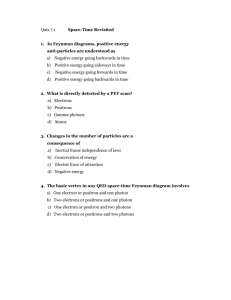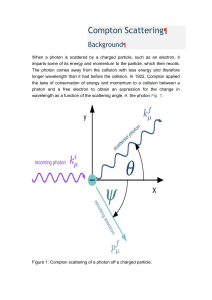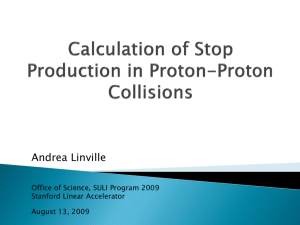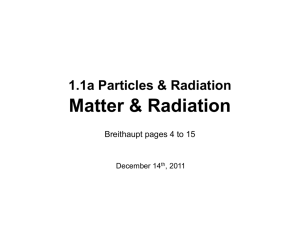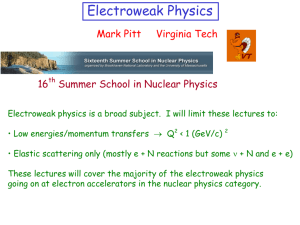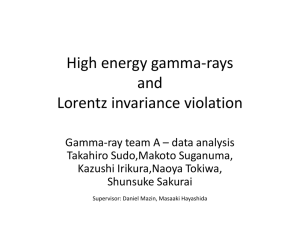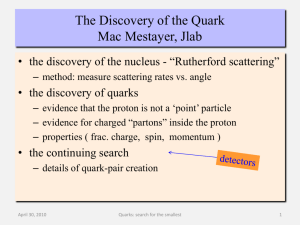Answers to Coursebook questions – Chapter J4
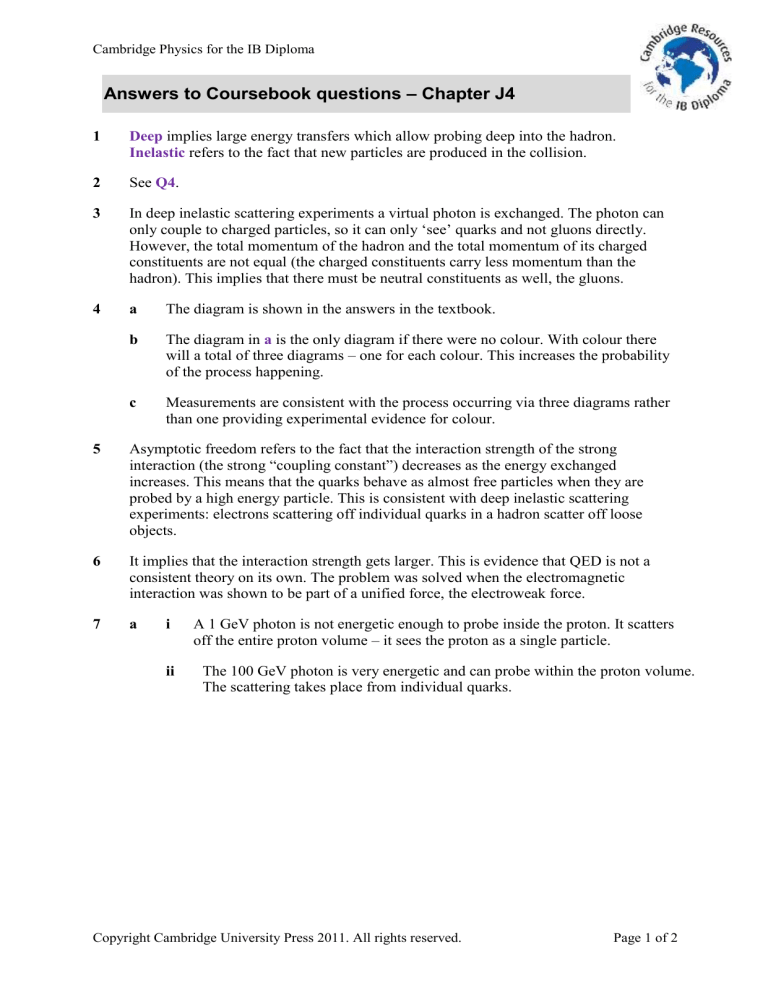
Cambridge Physics for the IB Diploma
Answers to Coursebook questions – Chapter J4
1 Deep implies large energy transfers which allow probing deep into the hadron.
Inelastic refers to the fact that new particles are produced in the collision.
2 See Q4 .
3 In deep inelastic scattering experiments a virtual photon is exchanged. The photon can only couple to charged particles, so it can only ‘see’ quarks and not gluons directly.
However, the total momentum of the hadron and the total momentum of its charged constituents are not equal (the charged constituents carry less momentum than the hadron). This implies that there must be neutral constituents as well, the gluons.
4 a The diagram is shown in the answers in the textbook. b The diagram in a is the only diagram if there were no colour. With colour there will a total of three diagrams – one for each colour. This increases the probability of the process happening. c Measurements are consistent with the process occurring via three diagrams rather than one providing experimental evidence for colour.
5 Asymptotic freedom refers to the fact that the interaction strength of the strong interaction (the strong “coupling constant”) decreases as the energy exchanged increases. This means that the quarks behave as almost free particles when they are probed by a high energy particle. This is consistent with deep inelastic scattering experiments: electrons scattering off individual quarks in a hadron scatter off loose objects.
6 It implies that the interaction strength gets larger. This is evidence that QED is not a consistent theory on its own. The problem was solved when the electromagnetic interaction was shown to be part of a unified force, the electroweak force.
7 a i A 1 GeV photon is not energetic enough to probe inside the proton. It scatters off the entire proton volume – it sees the proton as a single particle. ii The 100 GeV photon is very energetic and can probe within the proton volume.
The scattering takes place from individual quarks.
Copyright Cambridge University Press 2011. All rights reserved. Page 1 of 2
Cambridge Physics for the IB Diploma b For low and high energy scattering possible diagrams are: c The second diagram shows a photon scattering off individual quarks. With colour, each diagram must be counted three times – one for each colour of the quark. This increases the likelihood of this process, as is observed experimentally.
8 A neutral current is an exchange of the neutral Z particle. The Z particle as discovered at CERN in proton–antiproton collisions that created the Z. The Z immediately decayed into an electron–positron pair that was detected.
9 a In the second diagram only. The photon can only couple to a particle with electric charge. b There are two main reasons why the process proceeds via photon exchange much more frequently than with Z exchange: photon exchange means the interaction is electromagnetic and the coupling constant for an electromagnetic vertex is larger than that for weak interaction vertex. The second reason is that the presence of a very heavy particle (the Z) in an intermediate state reduces the amplitude for the process.
10 The available energy is the rest energy of the Z, which is about 91 GeV. Since the electron–positron pair must have equal and opposite momenta, they must also have the same energy. Hence each carries an energy equal to half the rest energy of the Z, about
45.5 GeV.
11 In a collision of a beam of protons with a beam of antiprotons a very large number of hadrons and other particles are produced, making identification of what is produced very difficult. Most of these particles, however, are produced along the direction of the two beams. The fact that the Z decayed into particles at large angles to this direction made identification of the electron–positron (the signature of the Z decay) possible.
Copyright Cambridge University Press 2011. All rights reserved. Page 2 of 2



